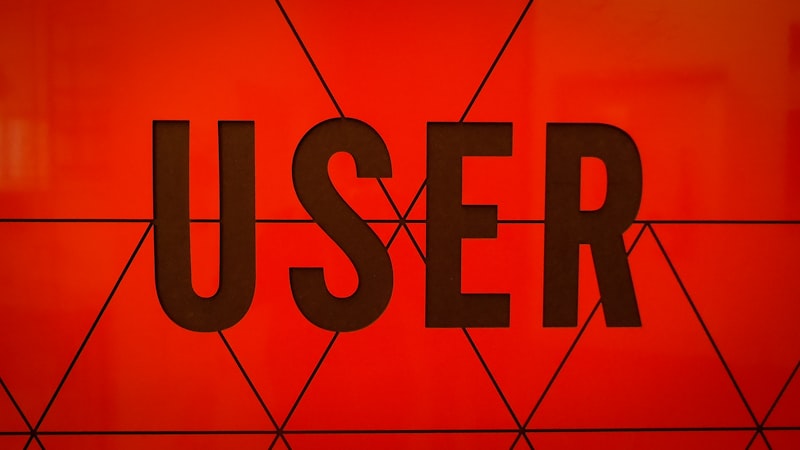"Discounting can be a great way to incentivize customers to take action, but it's important to make sure that you're not sacrificing long-term value for short-term gains."
I used to think that discounts were a last resort and something I'd only offer when all other tactics failed. Then I got an email from a SaaS company with a 40% discount code due to expire in 10 days. The email was plain and simple, but it worked. Here's the thing: discounting as a tool for persuasion isn't new, but the power of discounts can be significantly underestimated within software businesses (even though they're mighty). Discounts work well because they fit into the same psychological principles that affect all other human behavior—from getting someone to buy your product to convincing them to invite you on a date. In this article, I'll share how you can use discounting at different stages of your business and what makes them so effective.



Discounting as a tool for persuasion isn't new.
Discounting has been a part of commerce for centuries. Merchants use it to persuade potential customers, and it's not just limited to the retail world. In fact, discounting is one of the oldest tools in the persuasion toolbox—and one that works because it plays on human psychology.
Discounts are used to influence consumers' choices: they encourage people to buy more than they'd typically purchase or make them pay less for something than its perceived full value. But before you go out there and start discounting everything under your brand name in a desperate attempt to boost sales, note that discounts can have negative consequences if you use them too often or incorrectly.
Is discounting always a good idea?
Discounting isn't the be-all and end-all of your marketing strategy. It can be very effective at attracting new customers, and it can also help retain existing customers. But it has its downsides—your customers might get habituated to your discounts, and you would continue to lose money on discounts.
So should you discount? The answer is: yes! Well, maybe not always… but often enough. Discounts aren't perfect, but they're still a great way to drive new sales and keep existing ones happy.
The psychology of discounting, or why does discounting work?
Discounting is a form of persuasion that can be used to convince customers to buy your product. Discounting is negotiation. It is like bargaining, and it's a psychological game. If you understand the psychology behind discounting, then you know how to use it effectively to increase your revenue at scale.
To put it simply: discounts are offers made by companies that aim to convince customers that they should purchase now rather than later or wait for something better in the future. Discounts are meant to incentivize immediate action from potential clients by making their decision simpler with an attractive offer. They may also be intended as goodwill gestures or even show signs of desperation from the seller if they offer too much at once - both are bad for business!
Should discounting be part of your SaaS strategy?
Discounting is a powerful tool that can be used to gain traction in the market and increase awareness, as well as trial signups and customer retention. It's not just about getting new customers—it's also about keeping the ones you have happy.
- Get traction in the market for your SaaS product by offering special pricing to get people talking about your company (and its awesome products).
- Increase awareness of your brand by offering discounts on social media, in emails and web copy. This will attract more potential customers who will then be introduced to how great it feels to use your software!
- Increase trial signups through coupons or free trials that are available only for a limited time period.
- Increase customer retention through lifetime discounts on upgrades or other services offered by you (or maybe even another company)
How to use discounts, deals, and specials in SaaS
- Discounts are great for getting new users to try your service. When the price tag is higher than most people are willing or able to pay (especially when they don't know that much about it), then offering something like an initial discount on the first purchase will help get them over that initial hurdle of feeling like it's too much money for something they aren't sure about yet.
- Discounts are also great for getting existing users to refer other people who might like what your business does. You can offer special referral bonuses such as free months off their subscription if someone signs up through their recommendation – this incentivizes both parties by giving them each something back.
- Discounts can be used as part of your sales strategy by temporarily lowering prices during dry periods or launching new products). This way, you can generate buzz while still generating income even though there isn't enough demand yet at full price levels!
Experiment with different offers, discounts, and pricing models
You should also be open to experimenting with different discounting strategies.
Try different pricing models, discounts, and offers.
Try a discount for one customer who has been on the fence about purchasing from you but hasn't yet made a purchase. Or a test run where you offer 10% off all orders over $100 if they sign up during your launch week and pay with PayPal. You may also choose to offer free shipping with every order placed after midnight on Saturday, or decide that all subscriptions will get auto-renewed at 50% off the regular price until further notice!
Whatever you decide to do—be sure not to come up with too many rules around each promotion so that it doesn't become confusing or frustrating for your audience when they don't know exactly what is going on at any given time :)
Discounts can help you get more customers, but only if you use them properly.
So, what does it mean to use discounts properly?
It's simple. You want to be able to offer a discount without losing money on your existing sales. If you can do that, offering discounts will help you make more money in the long run.
But how do we know which customers are worth keeping and which aren't? We need some way of knowing whether or not they'll stick around after the discount is over—which means we need a way of knowing if they like us enough that they'll go out of their way not just once but twice and more.
That's where the product usage data from the likes of Amplitude and Heap come into play, which could be a topic for our next post.
I hope this article gave you some insight into whether or not it makes sense for your business to offer discounts. As I said before, discounting is a valuable tool for many businesses, but it has its limitations and pitfalls. If you decide to give it a try in your SaaS product, be sure to keep an eye out for any unintended consequences of doing so (such as sacrificing churn metrics). And above all else: keep experimenting with different discounting strategies until you find one that works perfectly for your company!
FAQ
1. What is discounting in SaaS, and why is it important?
Discounting is a pricing strategy that involves offering a product or service at a reduced price for a limited time. In the context of SaaS, discounting can be used to incentivize customers to sign up, upgrade to a higher plan, or renew their subscription. Discounting is important in SaaS because it can increase revenue, boost customer acquisition and retention, and create a sense of urgency among potential customers.
2. How do discounts affect customer behavior?
Discounts can affect customer behavior in several ways. First, they can create a sense of urgency and encourage customers to take action (e.g., sign up or upgrade) before the discount expires. Second, discounts can increase the perceived value of the product or service, making it more attractive to potential customers. Finally, discounts can create a sense of reciprocity, as customers may feel obligated to return the favor by making a purchase or recommending the product or service to others.
3. What are some common discounting strategies used in SaaS?
There are many different discounting strategies that SaaS companies use. Some common ones include:
- Percentage discounts: This is where you offer a percentage off the regular price, such as 10% or 20% off.
- Dollar amount discounts: This is where you offer a specific dollar amount off the regular price, such as $50 or $100 off.
- Free trials: This is where you offer a limited-time free trial of your software product or service.
- Freemium: This is where you offer a basic version of your software product for free, but charge for premium features or functionality.
- Volume discounts: This is where you offer a discount based on the quantity of product or service purchased.
4. How can I determine the best discounting strategy for my SaaS product?
The best discounting strategy for your SaaS product will depend on several factors, including your pricing structure, target market, customer acquisition costs, and revenue goals. A/B testing can be a useful tool for determining the most effective discounting strategy for your product. By testing different discounting strategies with a subset of your customer base, you can determine which strategy generates the most revenue and/or customer retention.
5. Should I offer discounts to new or existing customers?
This will depend on your specific business goals and priorities. Offering discounts to new customers can be an effective way to attract new business and grow your customer base. However, offering discounts to existing customers can help to increase customer loyalty and retention, and can lead to long-term revenue growth. Ultimately, the decision should be based on your specific business goals and the impact of discounts on your revenue and profit margins.
6. What is the best way to communicate discounts to customers?
There are several effective ways to communicate discounts to customers, such as:
- Email marketing campaigns: This is a great way to reach a large number of customers with a targeted message.
- Social media: Use social media platforms like Twitter, Facebook, and LinkedIn to promote your discounts and reach a wider audience.
- In-app messaging: Use in-app messaging to communicate discounts to customers who are already using your software product or service.
- Pop-ups and banners: Use pop-ups and banners on your website to promote your discounts and increase visibility.
7. How do I avoid cannibalizing sales with discounts?
To avoid cannibalizing sales with discounts, you should consider the impact of discounts on your revenue and profit margins. You may want to limit the number of discounts you offer or the duration of the discount period to avoid eroding your profit margins. Additionally, you can segment your customers and offer targeted discounts to specific groups to ensure that your discounts are not cannibalizing sales from other customer segments. It's also important to make sure that the discounts you offer are aligned with your overall pricing strategy and business goals.
8. Are there any legal considerations when offering discounts in SaaS?
Yes, there are legal considerations when offering discounts in SaaS. For example, if you offer a discount to a customer based on their membership in a particular group or organization, you may need to ensure that you are complying with anti-discrimination laws. Additionally, if you offer discounts that are only available for a limited time or for a limited quantity of product, you may need to ensure that you are complying with advertising and promotional laws.
9. How can I measure the effectiveness of my discounting strategy?
There are several metrics you can use to measure the effectiveness of your discounting strategy, such as:
- Customer acquisition: Measure how many new customers you acquire during the discount period.
- Conversion rates: Measure the percentage of website visitors who make a purchase during the discount period.
- Revenue: Measure the impact of the discount on your revenue and profit margins.
- Customer retention: Measure how many existing customers take advantage of the discount and continue to use your product or service after the discount period.
10. Can discounting be used as a long-term pricing strategy in SaaS?
Discounting can be used as a long-term pricing strategy in SaaS, but it should be used carefully. If you offer discounts too frequently or for too long, you may train your customers to expect lower prices in the future, which can erode your profit margins and make it difficult to raise prices later on. Additionally, discounts should be used strategically and aligned with your overall pricing strategy and business goals. It's important to carefully consider the impact of discounts on your revenue and profit margins before implementing them as a long-term pricing strategy.







